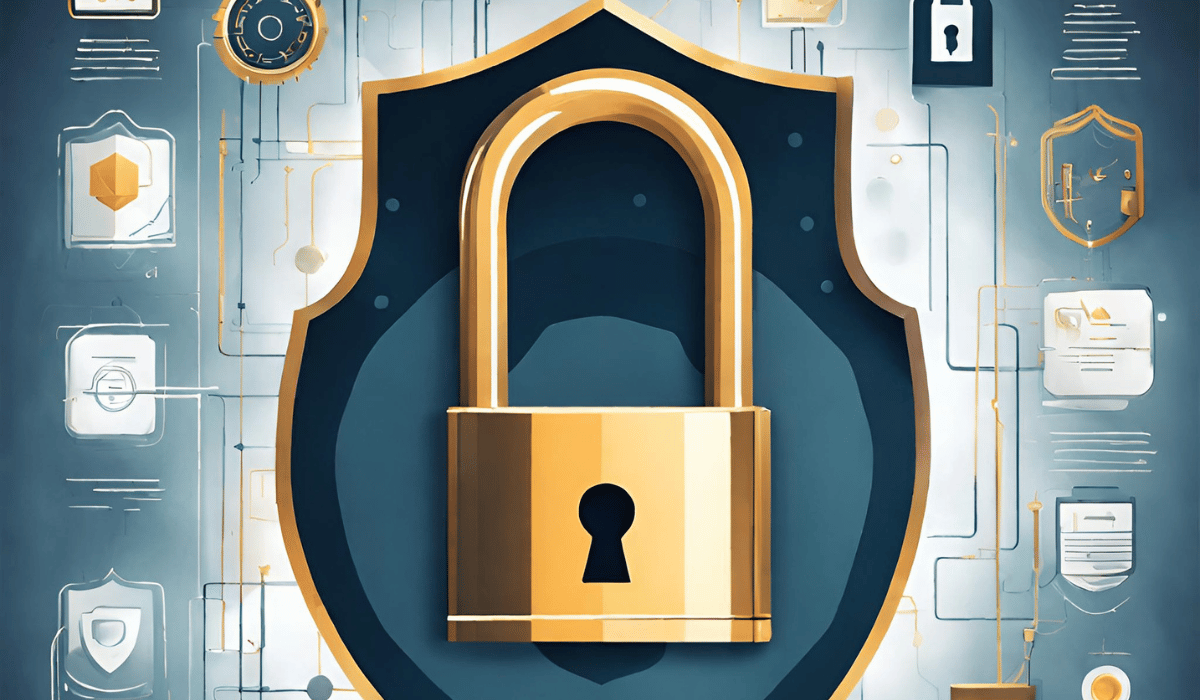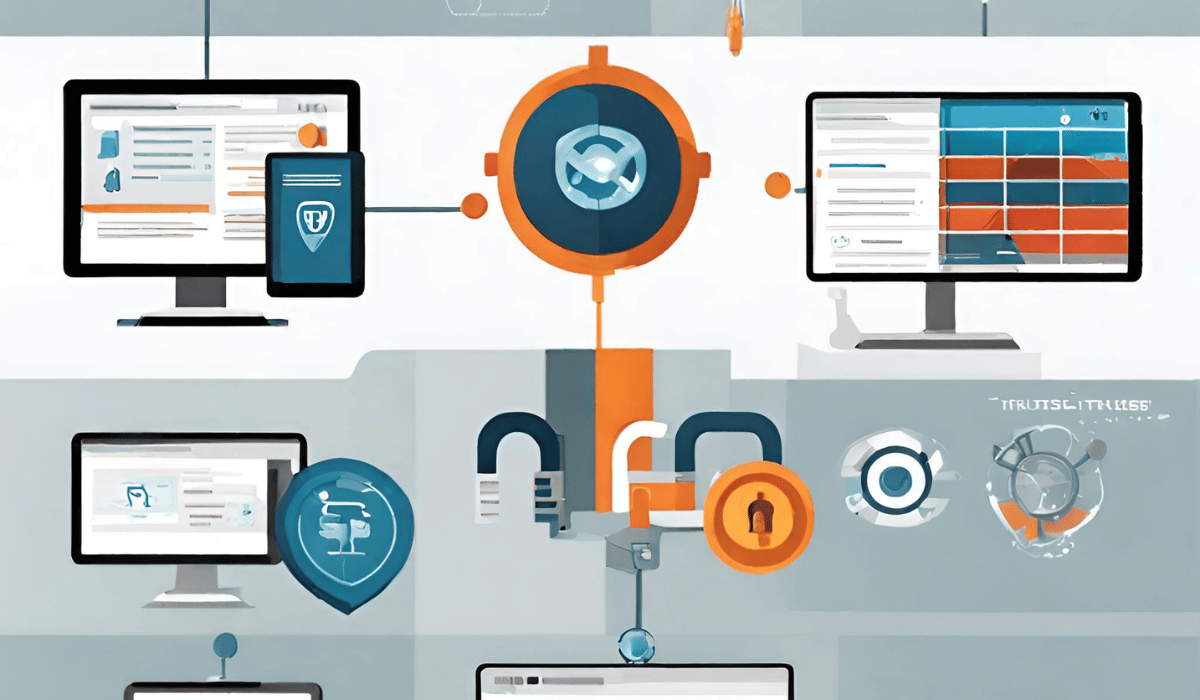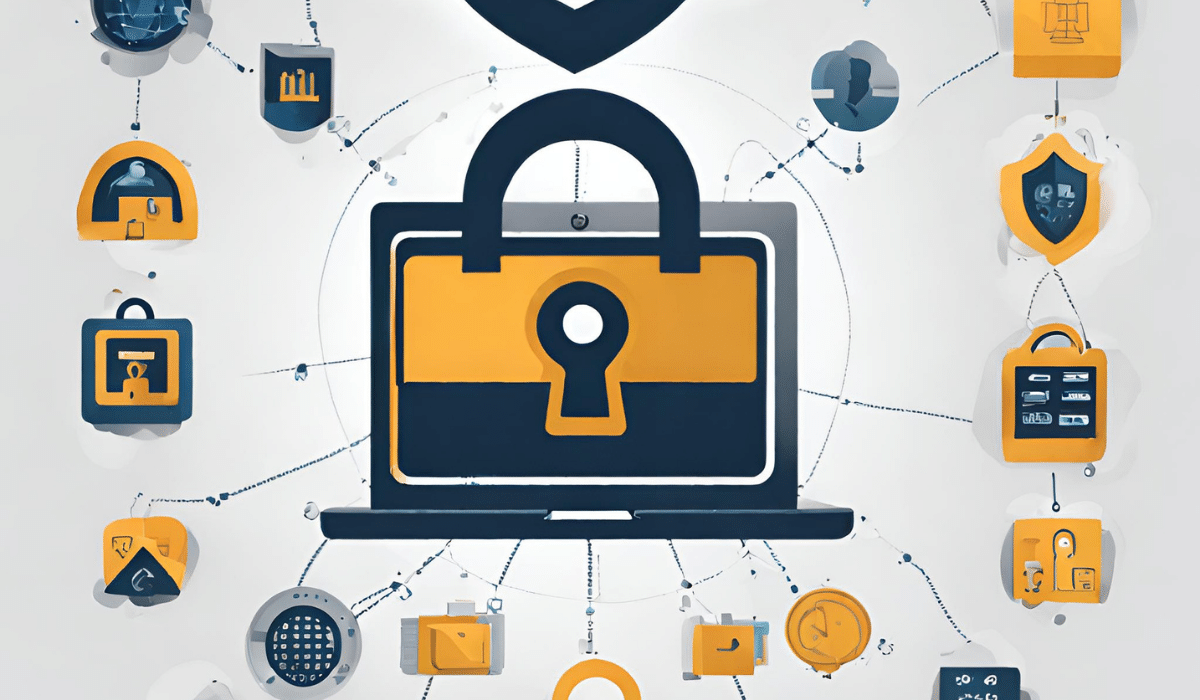Introduction
Importance Of Data Security In The Digital Era

In today’s digital era, data security has become a critical concern for individuals and businesses alike. With increasing cyber threats and data breaches taking place globally, it is essential to take measures to secure sensitive information. The need for robust data security practices has become more apparent with the rise of remote work environments as well. Employees are accessing company information from different locations and devices, increasing the risk of unauthorized access.
Overview Of TSI (Trusted System Identity) For Data Security

TSI, or Trusted System Identity provides authentication and access control for enterprise systems and applications while ensuring that only authorized users can access sensitive information. TSI enables organizations to maintain control over their data by allowing them to manage identities, policies, and access rights.
One of the key benefits of TSI is its ability to provide strong identity management across an organization’s entire infrastructure. With TSI, businesses can establish a single source of truth for user identities and ensure that they are consistent across all systems and applications. This not only simplifies administration but also reduces the risk of unauthorized access by enabling role-based permissions.
Another significant advantage of TSI is its support for multi-factor authentication (MFA). By requiring more than one form of identification before granting access to sensitive data or resources, MFA provides an additional layer of security against unauthorized access attempts.
Understanding TSI
What is TSI?
TSI, or Trusted System Identity, is a data security framework created by the Trusted Computing Group (TCG) to offer enhanced protection against cyber threats. The purpose of TSI is to establish trust between different systems and components in order to secure sensitive data and prevent unauthorized access.
The key components of TSI include hardware-based security such as trusted platforms modules (TPMs), firmware, software, and protocols that ensure secure boot-up processes and establish secure communication channels between devices. Additionally, TSI incorporates principles such as attestation, encryption, integrity measurement, and access control to protect data from malicious actors.
By implementing TSI in their systems and devices, organizations can reduce the risk of data breaches and enhance their cybersecurity posture. With the increasing digitization of business operations across various industries, TSI provides a crucial layer of protection for sensitive information in today’s digital age.
Evolution of TSI
The evolution of TSI has been driven by advancements in technology that have made data security a top priority. The historical background of TSI dates back to the early days of computing when data breaches were not as common as they are today. However, with the rise of the internet and digital technologies, it became apparent that there was a need for better ways to secure confidential information.
Advancements in technology have played a significant role in driving TSI adoption. Encryption algorithms have become more sophisticated over time, making it increasingly difficult for malicious actors to access sensitive data. Additionally, artificial intelligence and machine learning technologies are being used to detect security threats before they can cause any harm.
How TSI Works?
TSI Architecture
The Trusted Execution Environment (TEE) Secure Element (SE), and Host Processor are the three main components of the TSI architecture. The Host Processor is responsible for executing all non-secure tasks on a device, while the TEE handles secure operations. The SE stores cryptographic keys and other sensitive data, which can be accessed only by authorized personnel.
The TSI architecture provides end-to-end protection of data across all layers of a device’s software stack. It enables hardware-based security through an SE that is separate from the Host OS and processor. This ensures that even if an attacker gains control over the Host OS, they cannot access or manipulate sensitive data stored in the SE.
Overall, the TSI architecture provides strong protection against attacks such as malware injection, man-in-the-middle attacks, and unauthorized access to sensitive data. By providing hardware-based security at every layer of a device’s software stack, it offers comprehensive protection to businesses and consumers alike in today’s digital age where threats to data security are constantly evolving.
TSI Framework
The TSI framework provides a comprehensive approach to data security that includes several key elements, such as encryption, authentication, and access control. These elements work together to establish trust in the data system by ensuring that only authorized users have access to sensitive information.
The role of cryptographic protocols is particularly important in establishing trust within a data system. Cryptographic protocols use mathematics and algorithms to ensure that data is secure from unauthorized access or modification. This can include techniques such as encryption, which ensures that sensitive information is protected from prying eyes, as well as digital signatures, which provide a way for users to verify the authenticity and integrity of data.
TSI Implementation
TSI implementation involves deploying strategies and integrating with existing security systems to transform data security in the digital age. One of the TSI deployment strategies involves implementing a zero-trust approach that assumes all users, devices, and applications are untrusted and must be authenticated before granting access to resources. This approach enhances security by verifying identity, context, and access levels for each user or device trying to connect to the network.
Another TSI deployment strategy is implementing micro-segmentation that divides networks into smaller segments to limit lateral movement within the network. This strategy isolates workloads from each other and creates a virtual boundary between them, preventing attackers from gaining unauthorized access if they breach one segment.
Furthermore, integration with existing security systems is essential in TSI implementation for the seamless management of security policies across multiple environments. The integration ensures that all security solutions are working together towards a common goal of protecting data assets from threats.
Benefits of TSI for Data Security
Enhanced Data Integrity
By providing proof of the exact time when a document was created, modified, or accessed, TSI ensures that the integrity of the data is maintained at all times. Therefore, any unauthorized changes or manipulations in the original document would be detected immediately.
Transparency And Accountability
In addition to enhancing data integrity, TSI also provides greater transparency and accountability in data management systems. With TSI in place, organizations can track and monitor all activities related to their digital documents. This means that they can easily identify who accessed a particular document and what changes were made to it over time. This level of transparency helps prevent fraudulent activities such as document tampering and unauthorized access.
Secure Data Sharing
One of the key advantages of TSI is its ability to facilitate secure data sharing. This is achieved through controlled access and permission management features that allow users to set specific levels of access for different individuals or groups. This means that only authorized personnel will be able to view or edit sensitive information, reducing the risk of breaches caused by human error or malicious intent.
TSI ensures that only authorized users can access sensitive information. TSI uses authentication methods such as biometric scanning and multi-factor authentication, making it difficult for cybercriminals to gain access to confidential data. Moreover, TSI provides real-time monitoring and alerts in case of any unusual activity on the network.
Challenges and Limitations of TSI
Scalability Issues
One major challenge with TSI is scalability issues. Many companies have vast amounts of data that they need to process in real time, and handling large-scale data systems can be a daunting task. With TSI, this challenge is compounded by the fact that it was originally designed as a cloud-based service, meaning that it may not be suitable for on-premises use without significant customization or investment in infrastructure.
Interoperability Challenges
Integration with different platforms and technologies is one of the significant challenges that organizations face when adopting TSI. Data security requires an integrated system to ensure that all data is secure, regardless of the platform or technology used. However, some systems may not be compatible with others, leading to integration issues. This challenge stems from the fact that different applications or platforms use various programming languages and software architectures.
Standardization efforts in TSI adoption remain a challenge despite attempts at creating common standards. The lack of standardization makes it difficult for organizations to establish a robust security framework across their operations. Developing common standards can also be challenging due to differences in regulations across regions and countries.
Conclusion
TSI is revolutionizing the way data security is handled in the digital age. The company’s cutting-edge technology and innovative solutions have made it possible for businesses of all sizes to protect their valuable information from any potential threats. With TSI’s advanced encryption methods and round-the-clock monitoring, companies can rest assured that their data is in safe hands.
Moreover, TSI’s commitment to providing top-notch customer service has been a game-changer in the industry. The company’s knowledgeable support team ensures that clients have access to expert assistance whenever they need it. Whether it’s answering questions or resolving issues, TSI goes above and beyond to ensure that its customers are satisfied.
Frequently Asked Questions (FAQs)
How Does TSI Ensure Data Integrity?

Ensuring data integrity is one of TSI’s top priorities, and it has implemented various measures to safeguard its clients’ data. One way TSI ensures data integrity is by using encryption technology at rest and in transit.
In addition, TSI employs robust access control mechanisms that limit access to sensitive information only to authorized personnel. The company also uses state-of-the-art firewalls and intrusion detection systems to protect against cyber-attacks. To further enhance security, TSI implements regular vulnerability assessments and penetration testing.
Can TSI Be Integrated Into Existing Security Systems?
Integrating TSI into existing security systems is possible and can further improve the level of protection these systems provide. The implementation process is relatively straightforward, and it involves analyzing the current security system to determine areas where TSI can be incorporated without disrupting existing protocols and operations. This may require updating certain components or software to ensure seamless integration.
What Are The Challenges In Implementing TSI?
One of the major challenges in implementing TSI is the cost it incurs. The implementation of TSI requires a significant investment in terms of time, money, and resources. Organizations need to invest in new technology, hire skilled personnel to manage and maintain the system and train their employees on how to use the new technology. This can be quite expensive for smaller organizations that may not have a large budget.
Another challenge in implementing TSI is its complexity. The process of transforming data security requires a thorough understanding of complex technologies such as encryption, tokenization, and access control mechanisms. Moreover, TSI implementation involves multiple stakeholders from different departments who must work together closely to ensure that all aspects of data security are considered.
What Industries Can Benefit From TSI Adoption?
TSI (Trusted Security Identifier) is a powerful tool that can be adopted across a range of industries to enhance data security. One industry that can benefit from TSI adoption is finance. Financial institutions handle sensitive information like personal details, bank account numbers, and credit card information. TSI implementation in the financial sector can help protect such critical data from cyberattacks.
Another industry that stands to benefit from TSI adoption in healthcare. Healthcare organizations store vast amounts of confidential patient data in electronic health records (EHRs). This makes them prime targets for cybercriminals who seek to steal and sell such valuable information on the dark web. TSI implementation in healthcare can prevent unauthorized access or hacking of EHR systems and secure patient data.
